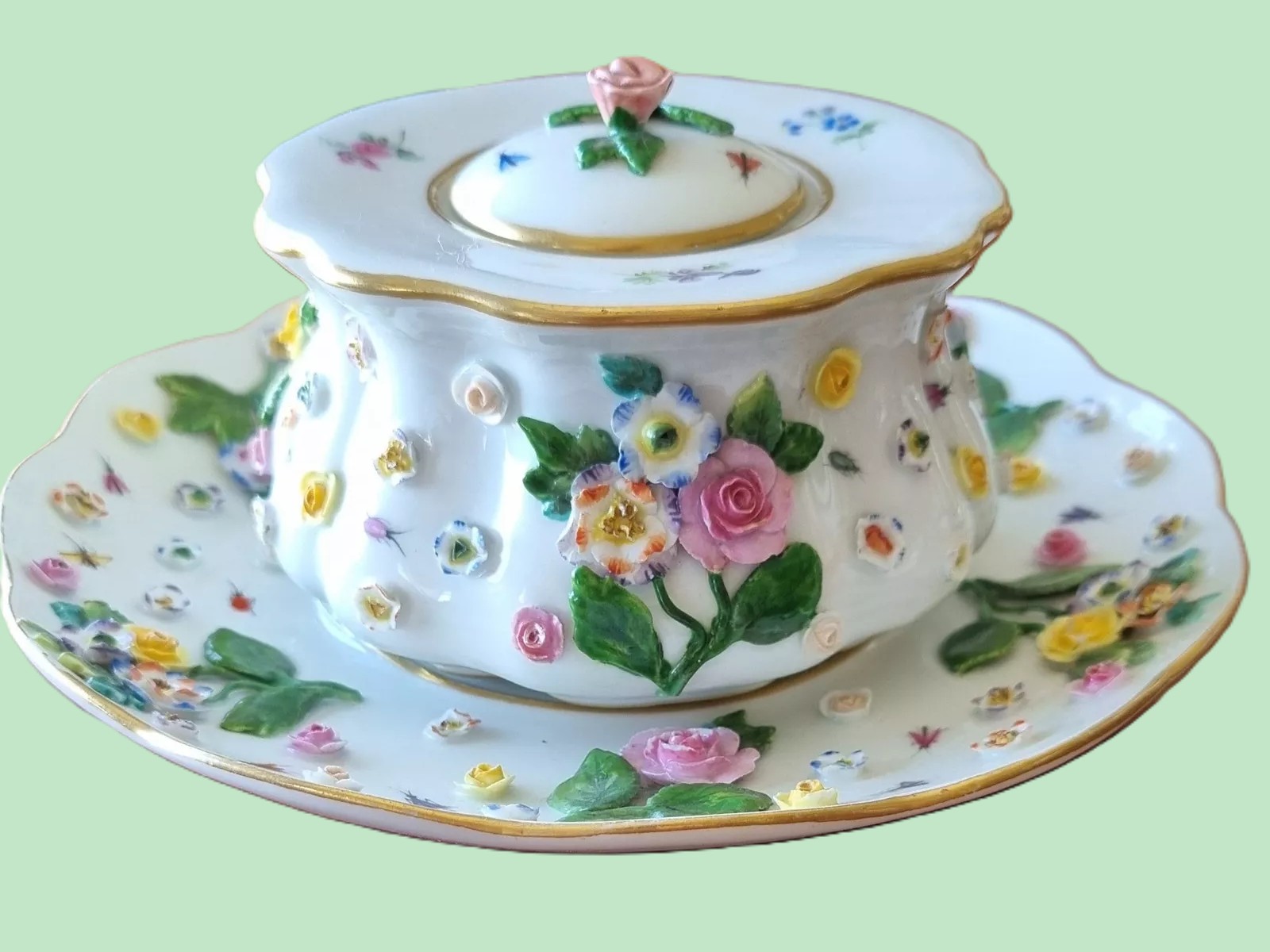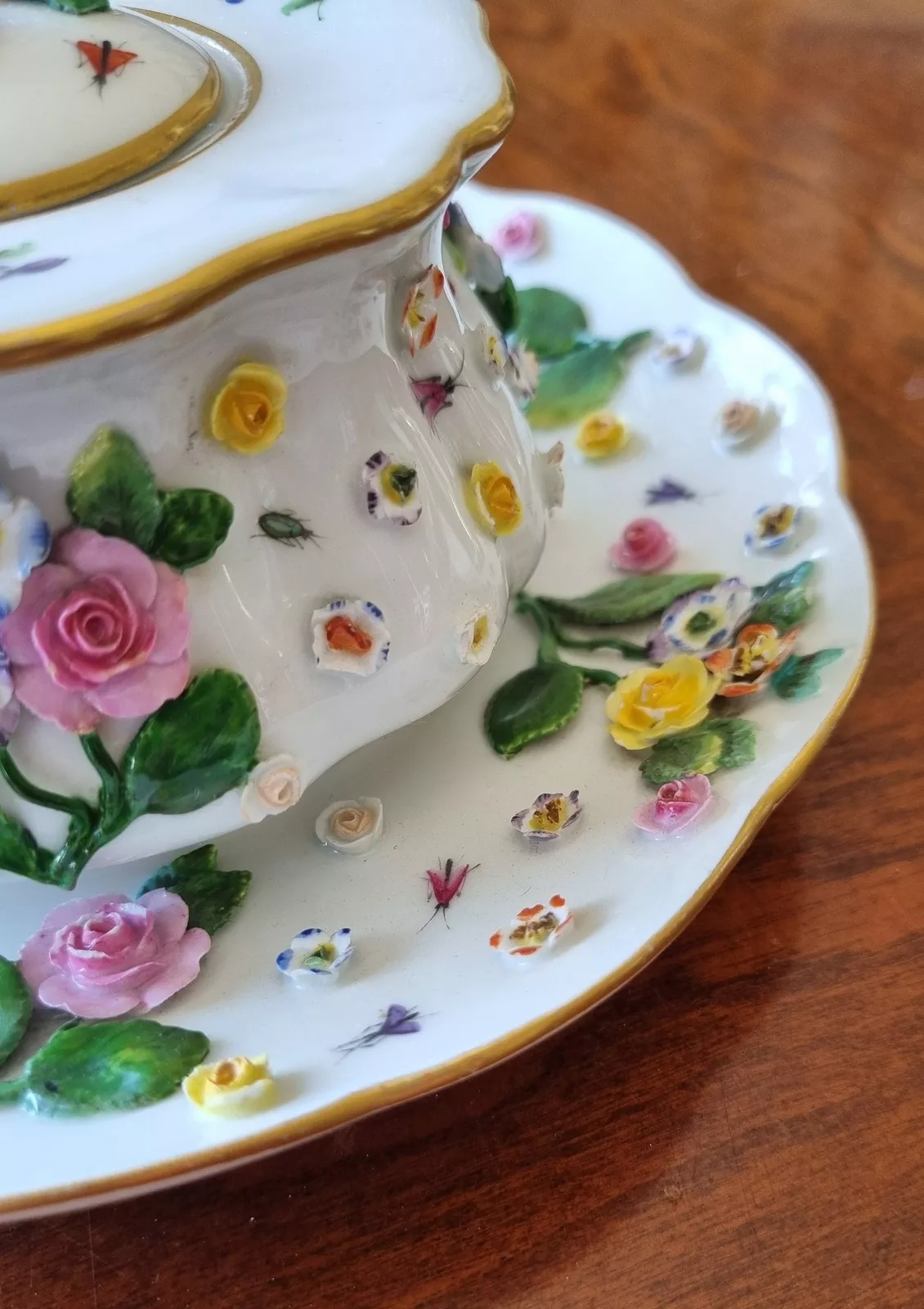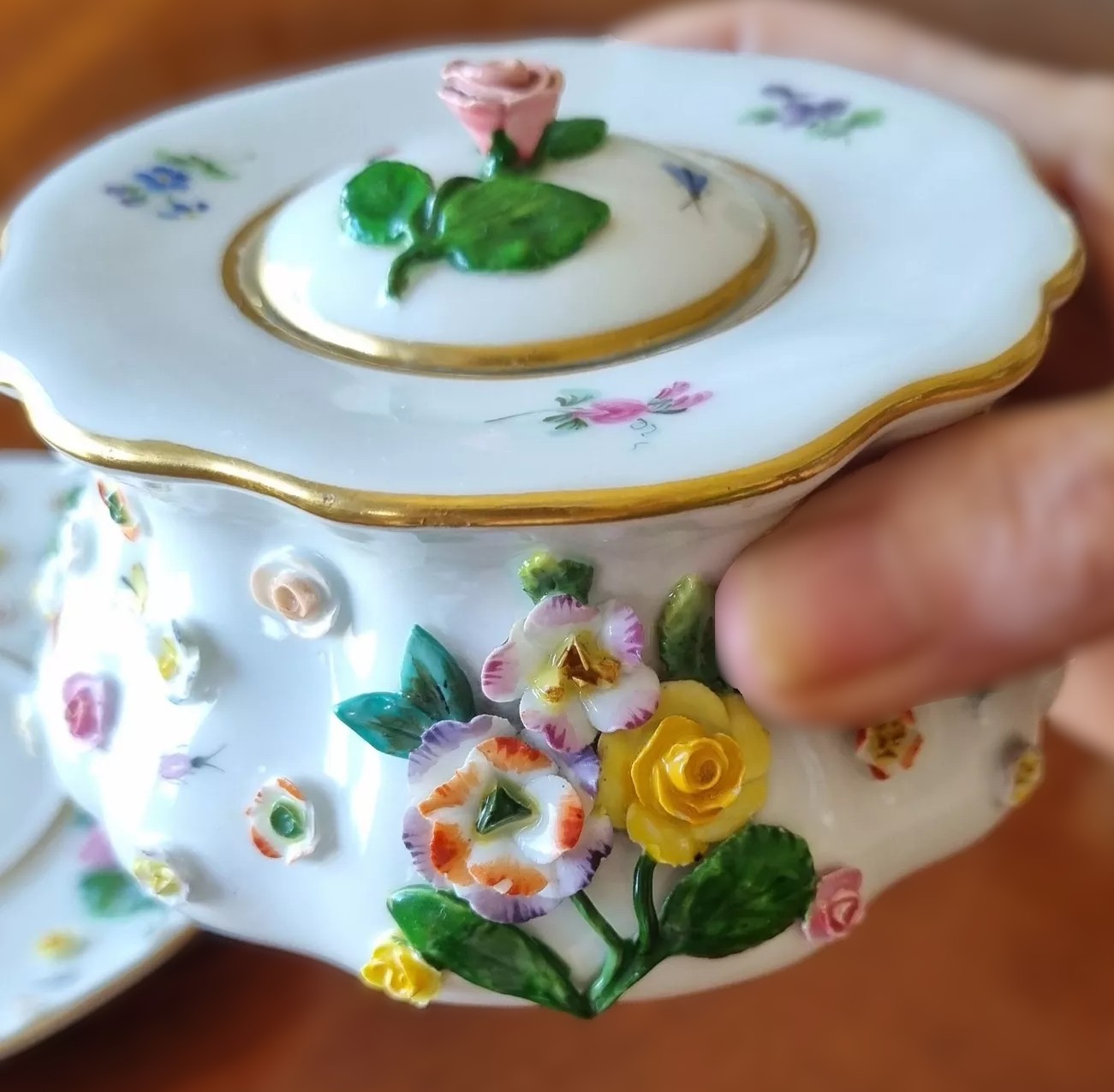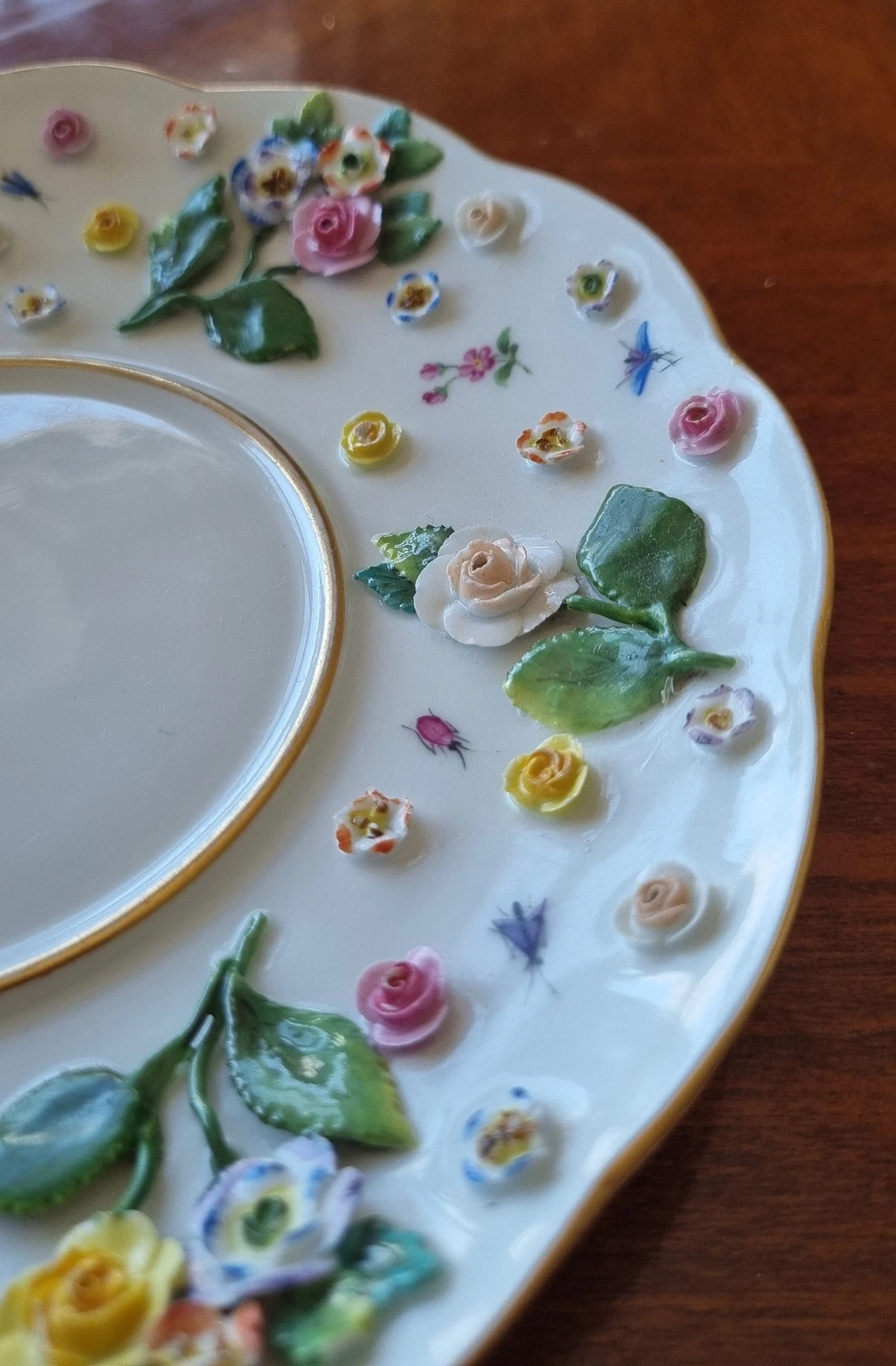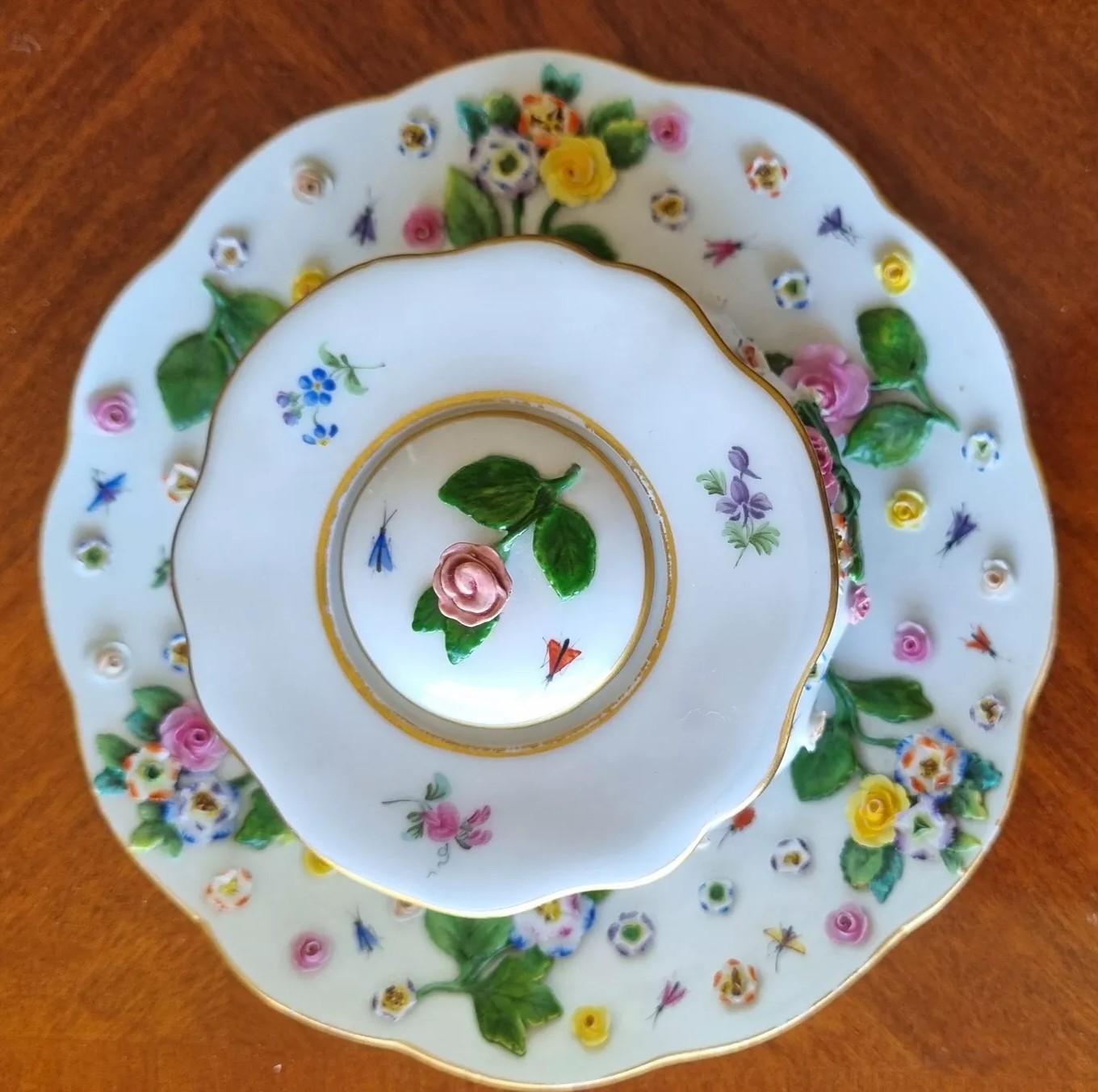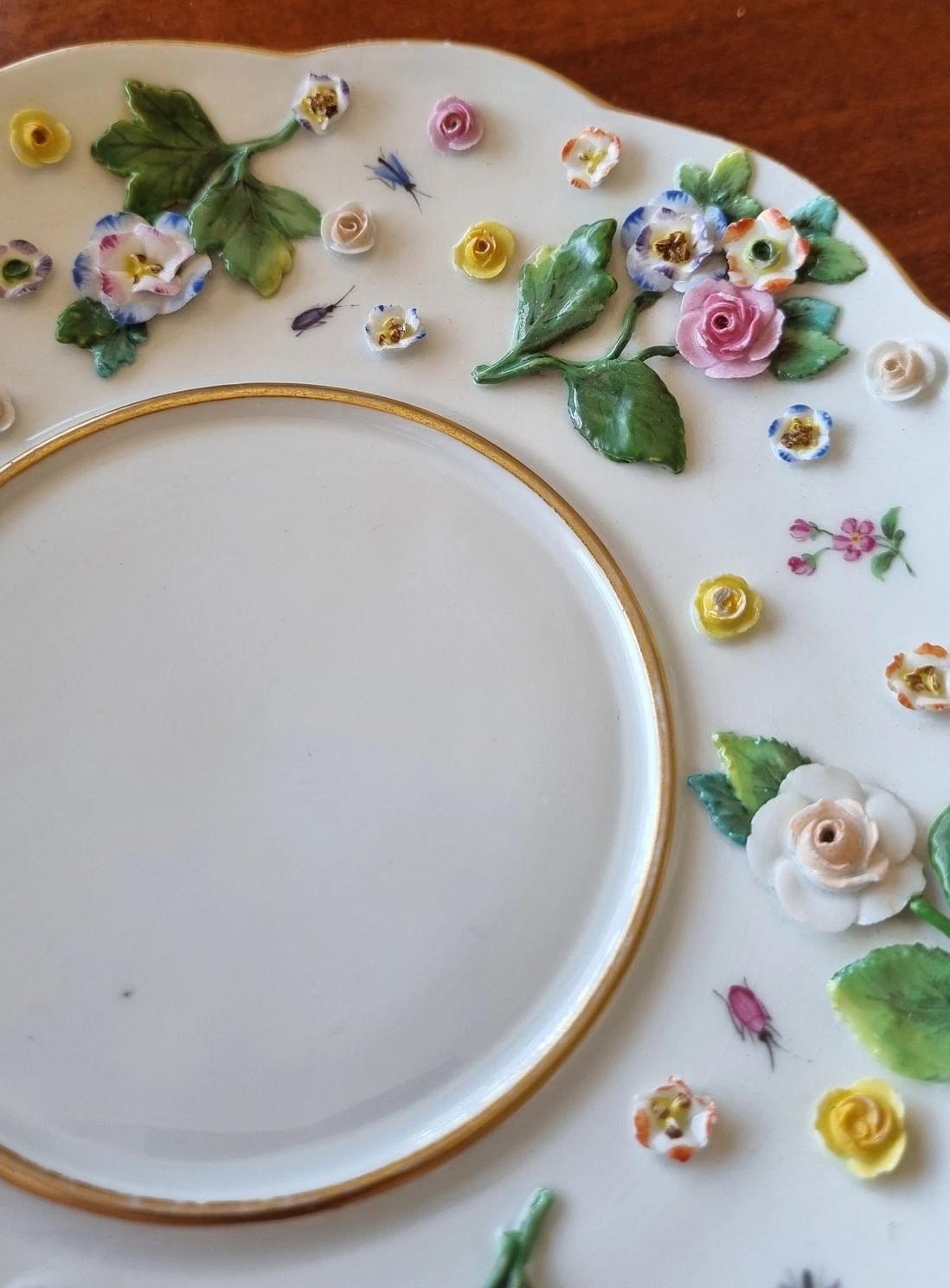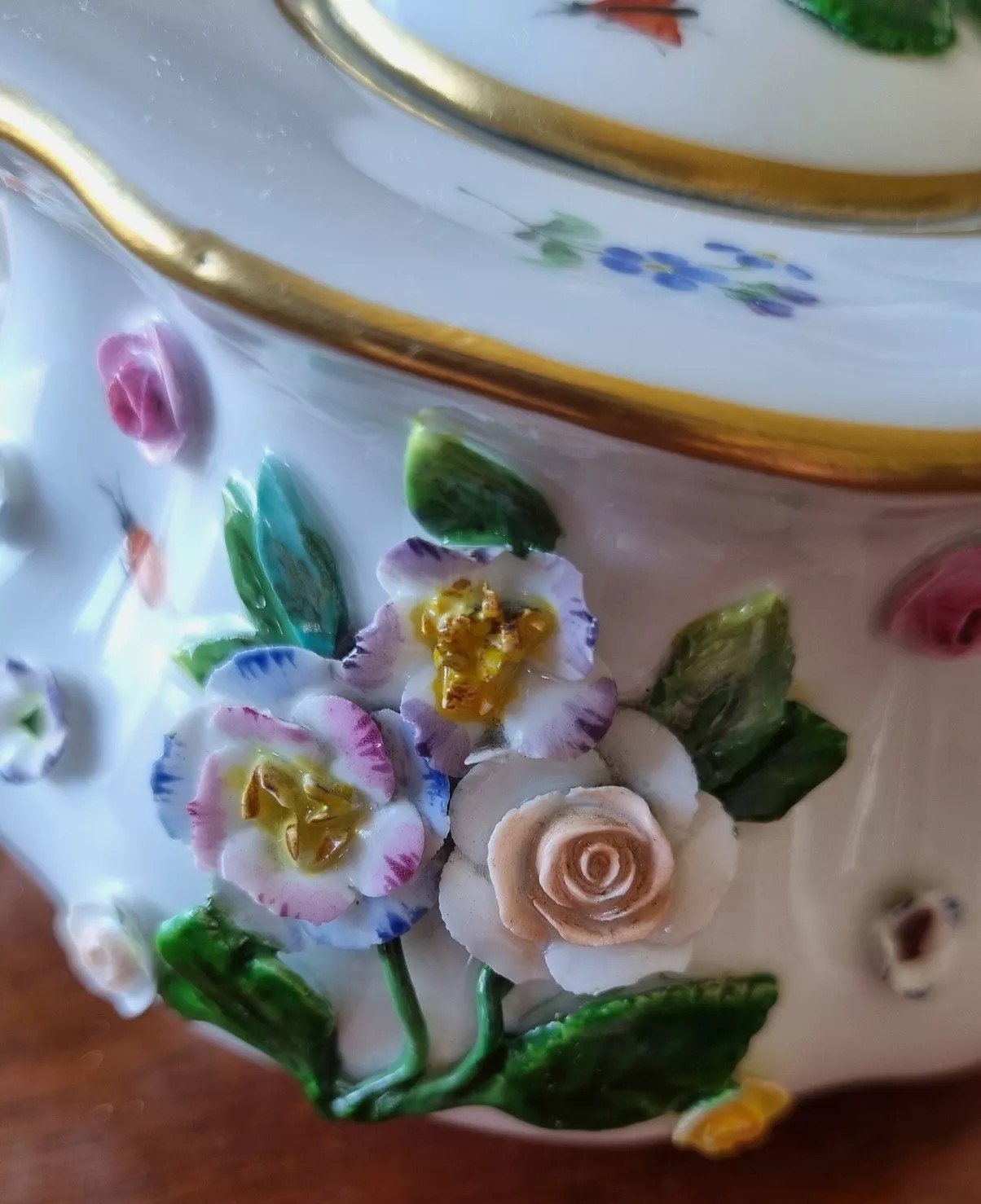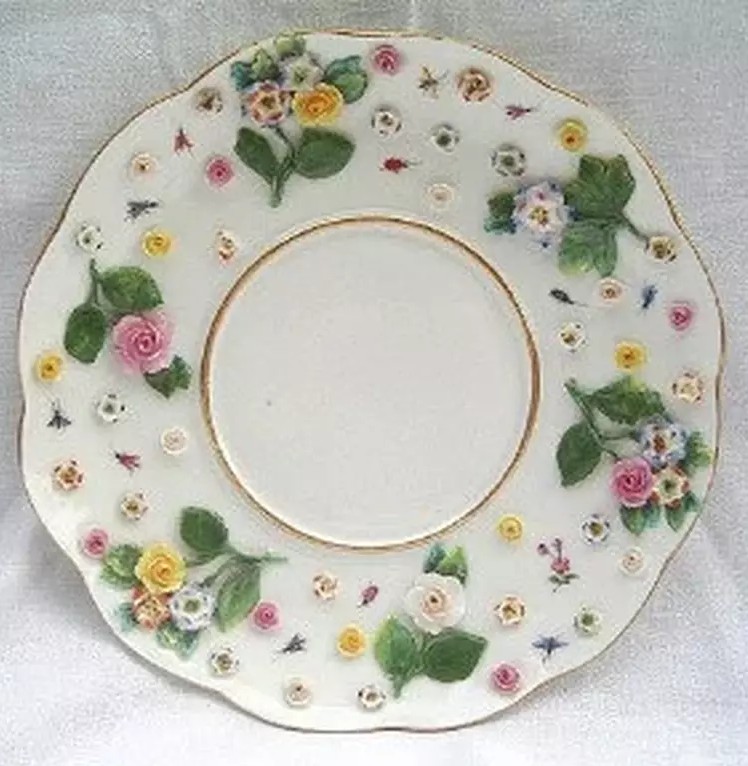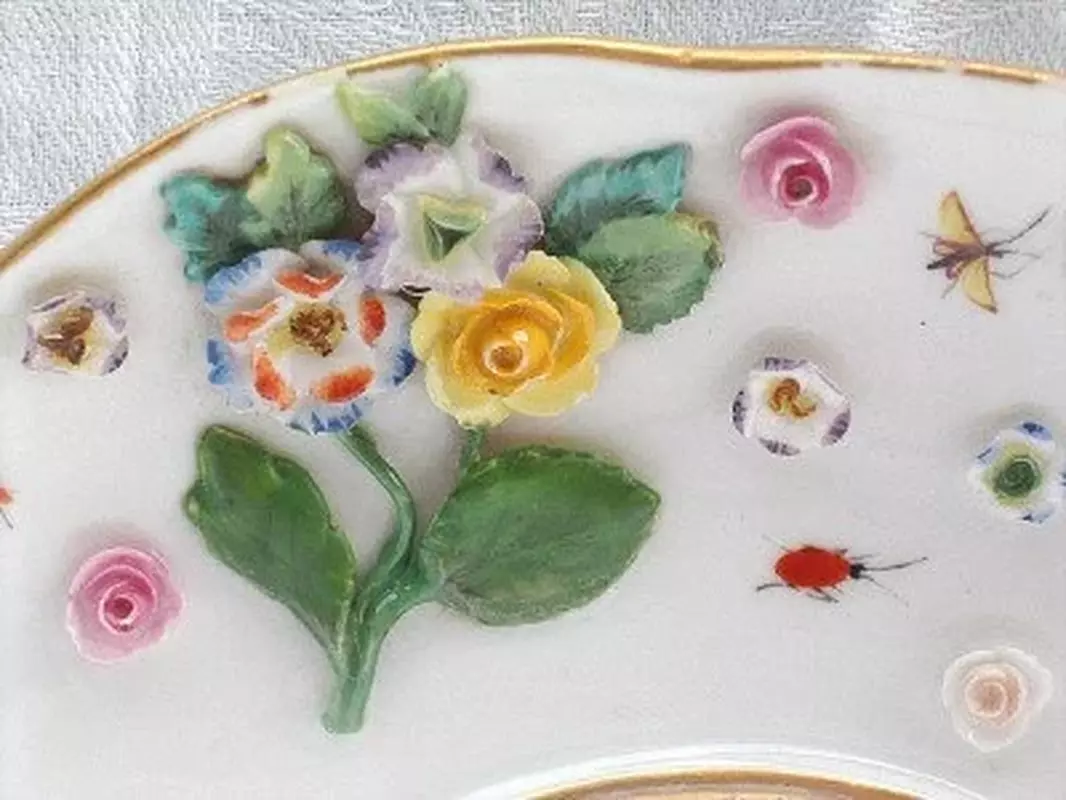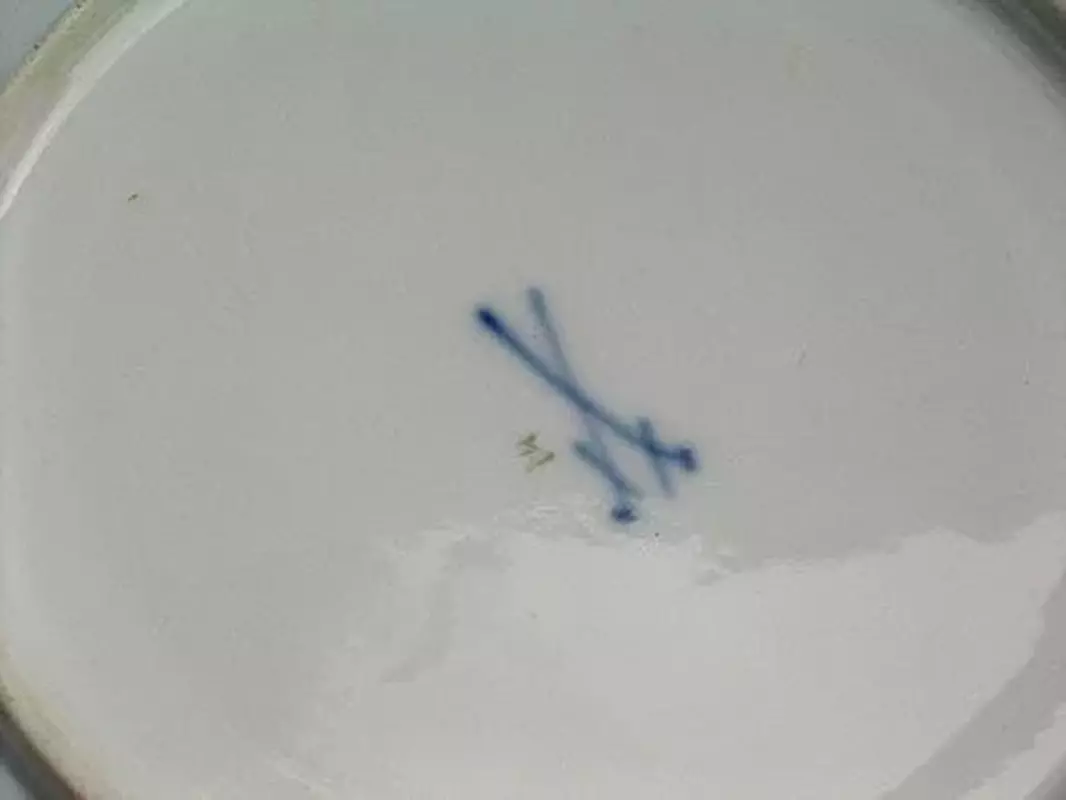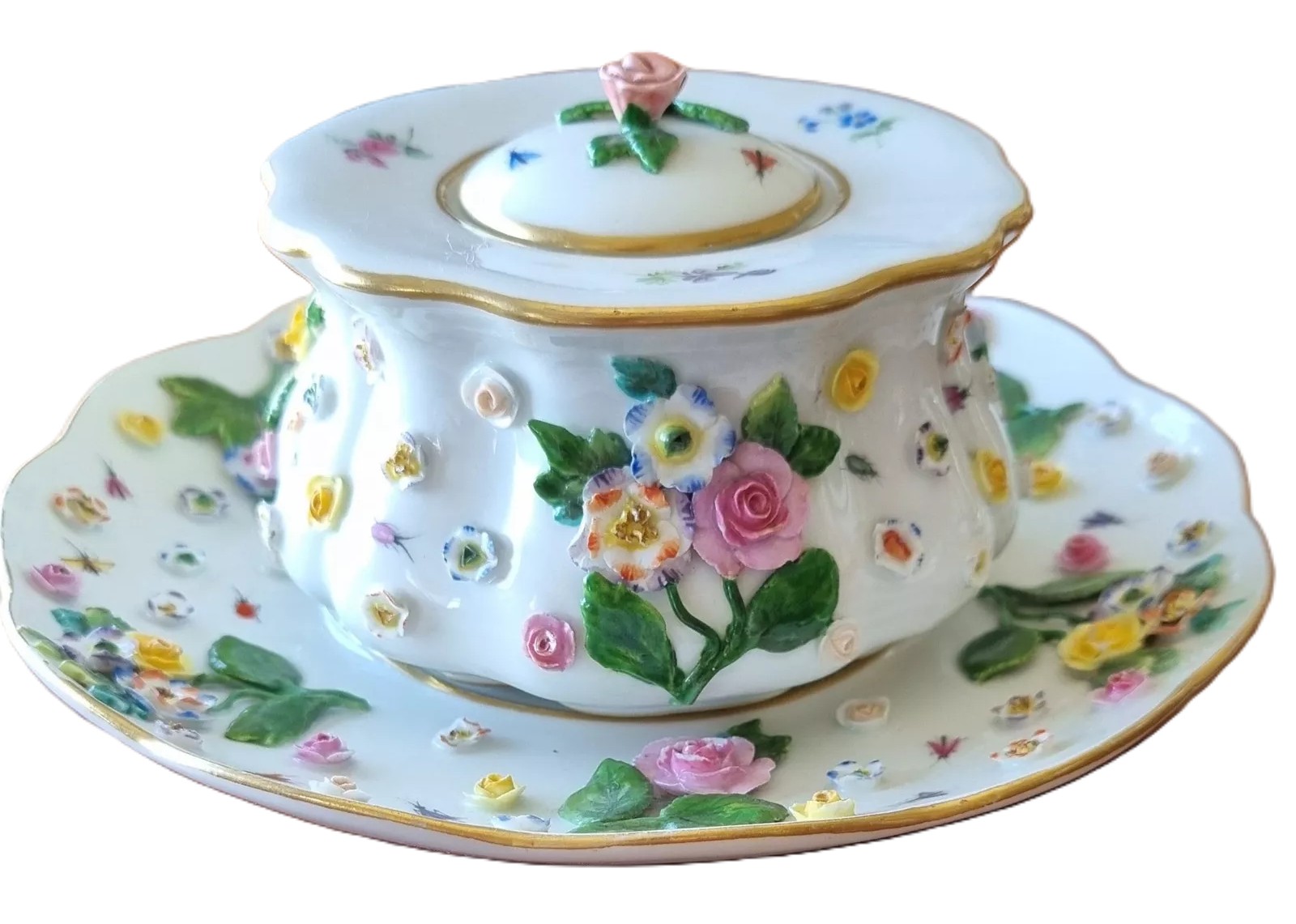
Meissen Porcelain Inkstand
| Categories | Ceramics/Porcelain "Named" Makers |
| Material | Porcelain |
| Markings | See Narrative |
| Manufacturer | Meissen |
| Origin | Germany |
| Date or Era | circa 1800 |
| Measuring | Inkwell – 4” across; saucer base – 7” diameter |
The inkstand is a beautiful example of Meissen’s renowned porcelain work. It consists of a lidded inkwell and a separate saucer base.
- Materials and Construction: The piece is made of fine white porcelain. The decorations are a combination of applied, three-dimensional elements and painted details. The edges of both the inkwell and the saucer are highlighted with gold gilt.
- Design and Decoration:
- Applied Flowers and Leaves: Both the inkwell and the saucer are lavishly decorated with hand-modeled, three-dimensional flowers and leaves. The flowers are in various forms and colors, including pink roses, yellow and white flowers with detailed centers, and purple and blue blossoms. The leaves are also individually modeled and painted in shades of green.
- Painted Insects: Interspersed among the applied flowers are finely hand-painted insects, including butterflies and ladybugs, which add a charming, naturalistic touch.
- Form: The inkwell has a gently fluted, organic shape, and its lid features a sculpted rose finial and a painted insect. The saucer base is also scalloped, with a central raised ring to hold the inkwell securely.
- Markings:
- Meissen Cross Swords: The base of the saucer is marked with the Meissen blue crossed swords mark.
- Hand-painted Number: Below the crossed swords is a small, hand-painted number “14.” This is likely a decorator’s or painter’s mark, used for inventory or quality control.
- Incised Mark: There is an incised “B38” mark on both the inkwell and the saucer base. Incised marks like this were typically a model or form number used by the factory. This number helps to identify the specific shape and design of the piece.
Estimated Age
The combination of the Meissen crossed swords mark and the style of decoration provides a basis for estimating the age.
- Marcolini Period (c. 1774-1814): The exuberant, naturalistic style, with hand-modeled and applied flowers (“Schneeblumen” or snow flowers), is characteristic of the Marcolini period. This era at Meissen is famous for its intricate botanical and insect decorations, often with a similar “bouquet” arrangement of flowers.
- Model Number B38: Research into Meissen model numbers confirms that patterns with applied flowers and insects, like B38, were indeed produced during the late 18th century.
Given the style, the presence of the incised model number “B38”, and the traditional blue crossed swords mark, it is suggested that this Meissen inkstand dates to the late 18th century, specifically the Marcolini period (c. 1774-1814).
Estimated value: $800
Content disclaimer. The information posted is the owner’s best knowledge and may not have been vetted by the SOIC. We welcome comments, corrections, and additions, working to make our website information comprehensive and accurate.
Join the Society of Inkwell Collectors (SOIC) – it’s free!
Founded in 1981 as a non-profit organization,
we are documenting inkwells (and accessories).
We’re here to help and inform!
